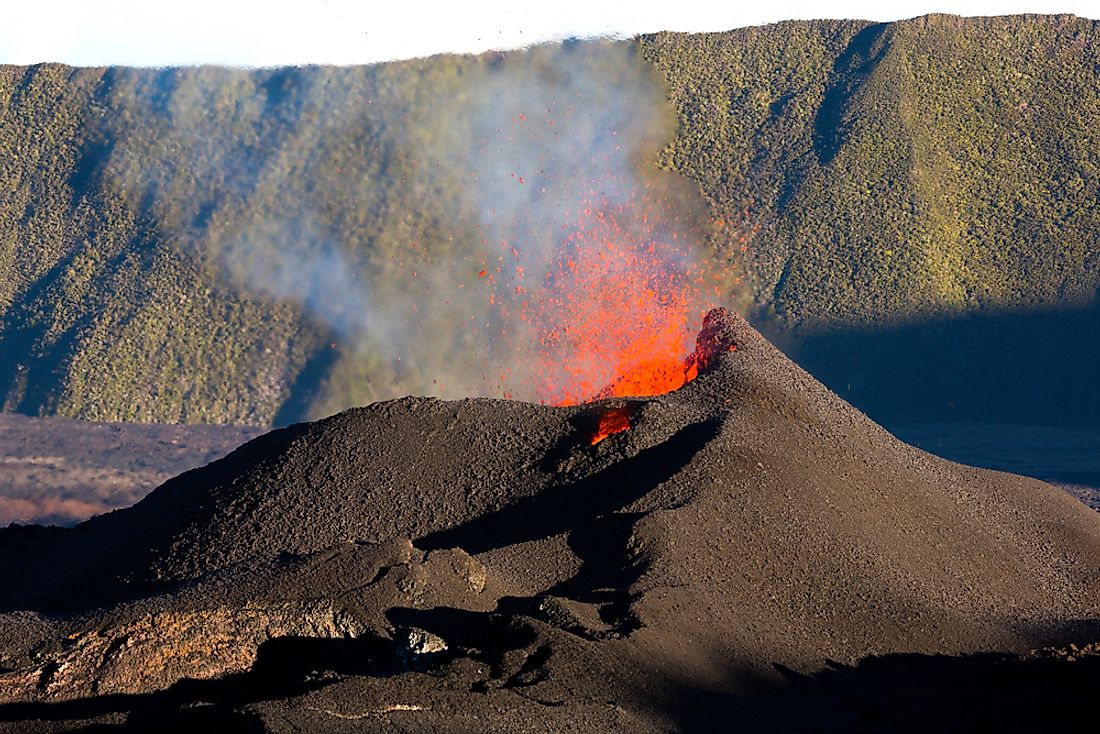Where are Most Volcanoes Likely to Form?

Volcanoes are not evenly distributed, and they tend to be highly concentrated in a few areas and absent in most areas of the world. For instance, 75% of the worlds active and dormant volcanoes (452 to be precise) are around Pacific ring of fire. However, this ring of fire that stretches from South America via North America to Asia is less than 1% of the earth total area. The reasons for this skewed distribution are closely related to how volcanoes form. A volcano is formed of hot molten rock (magma), ash, and other hot debris flow to the surface (crust) from the mantle. Lava flows (which are the hot magma that comes to the surface) are possible because the interior of the earth is dynamic. The earth's interior is made of several tectonic plates that always move in relation to each other. Volcanoes are common in areas where the plates come into contact with each other. Areas, where tectonic plates come into contact, are called boundaries. Geologists classify boundaries as either Convergent tectonic plate boundaries or Divergent tectonic plate boundaries
Convergent Plate Boundaries
Convergent boundaries, also called subduction zones, are areas where an oceanic or continental tectonic plate goes under another plate. This exerts tremendous pressure on the areas in contact leading to rock melting and volatile substances such as water being converted into gas. Due to extremes of heat and pressure, volcanic activity is frequent and widespread in these areas. The eastern portion of the ring of fire is a result of subduction of Cocos and Nazca Plates beneath the South American Plate. The Western part of the ring is due to the Juan de Fuca Plate and Pacific Plate being subducted beneath the North American Plate.
Divergent Tectonic Plate Boundaries
Divergent boundaries, also called extensional boundaries, are areas where plates are moving away from each other. The movement creates gaps and magma can easily reach the surface leading to volcanic activity. The movement is also the reason behind volcanoes in East African Rift valley, southwestern US's Basin, and Range (New Mexico and Nevada) Province, and mid-ocean ridges.
Volcanic Hot-Spots
Volcanic hot spot makes an area likely to form volcanoes. For unclear reasons, some areas of the mantle referred to as plumes, become far hotter than the rest of the mantle. The plume rises upwards towards the surface, and where it finds a weakness in the crust, it flows through leading to an outpouring of lava hence forming volcanoes. There is no pattern in the distribution of plumes, so hotspot volcano distribution is random. Such volcanoes include Hawaii and Yellowstone Park.
Formation of Volcanoes
The dynamic nature of earth's interior is responsible for the formation, hence the distribution of volcanoes. Most of the volcanoes are caused by tectonic plates pushing against each other in areas where two or more plates meet. Fewer volcanoes are formed where plates are moving away from each other leading to the crust becoming thinner than usual. The rarest type of volcanoes are formed by hotspots areas of unusually high temperature in the mantle that push against the crust and finally erupt.











